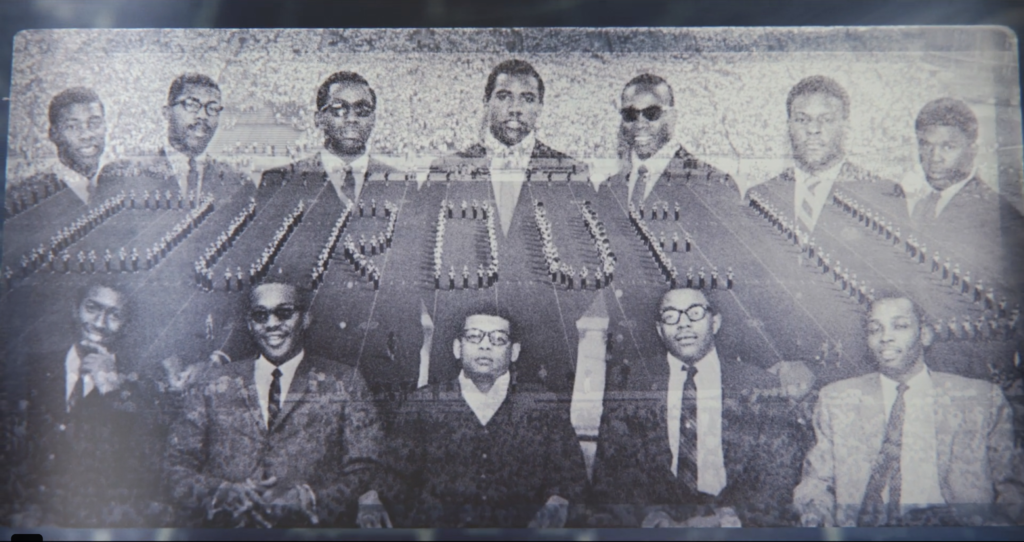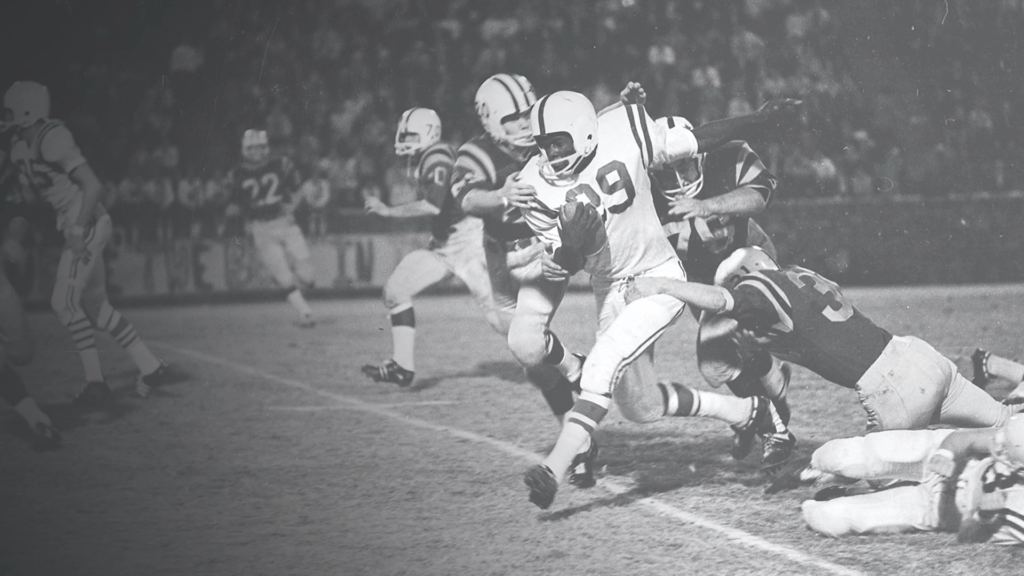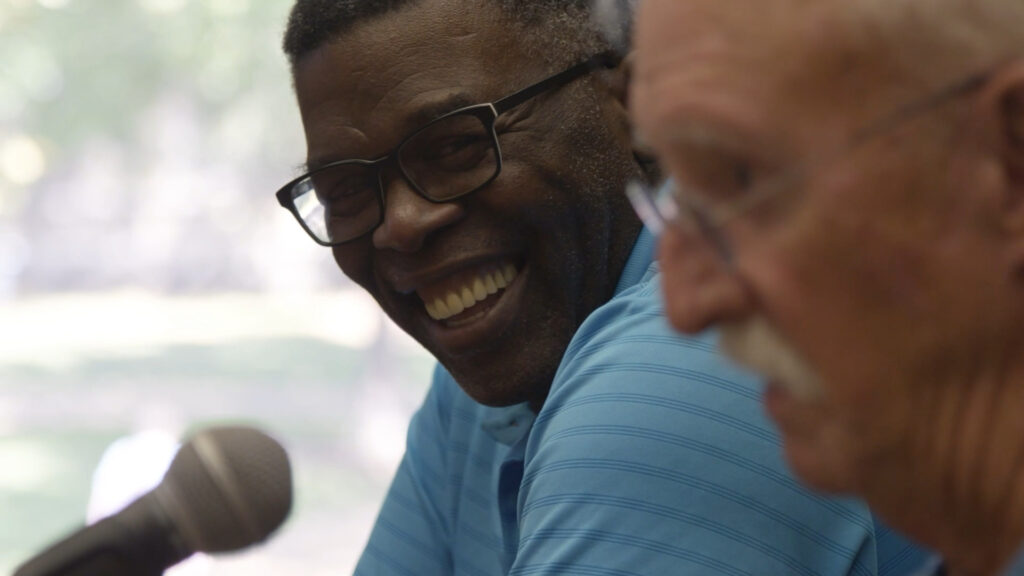Director: Louise Woehrle
Synopsis: Jimmie and De, former classmates in Charlotte in the 1960s, connect decades later after a shocking discovery compels them to face how the legacy of slavery in America links the two men in unforeseen ways.
If there was one thing you could always count on when it came to ESPN’s “30 for 30” documentary series, it was an acute sense of nostalgia. Most of the stories on which each film focused were relatively well-known quantities, from Jordan Rides the Bus — a look back at Michael Jordan’s short-lived baseball career and the dramatics that preceded it — to The Fab Five — a reexamination of the University of Michigan’s 1991 basketball recruiting class, which featured Chris Webber, Jalen Rose, and Juwan Howard. Occasionally, these documentaries dove beneath the surface of old game footage; episodes like Unguarded, the story of Chris Herren, a former basketball prodigy whose career was derailed by drug and alcohol abuse, uncovered lesser known stories about athletes and teams we may have heard from had their journeys unfolded differently.
But those aforementioned undertones of nostalgia and a keen desire to redeliver sports fans to the glory days were what really drove the Worldwide Leader’s success when it came to “30 for 30”. That’s just a small part of what makes a documentary like Louise Woehrle’s A Binding Truth so refreshing: As by-the-numbers as it is in format, it tells a sports story that is truly unknown, but only in a precursory sense. After an introduction to its main players through that lens, it uncovers something deeper and wholly heartbreaking, and places an emphasis on how the undisclosed darkness of the past can be atoned for in the future.

Jimmie Lee Kirkpatrick was called “the next Jim Brown” when he was in high school, a star running back in North Carolina who made waves when he left Second Ward High, a public school for African Americans, to enroll at Myers Park High, a predominantly white school in Charlotte. In the decades since his career ended, he has been honored and awarded for his trailblazing accomplishments, but during his playing days, he faced harsh resentment and racism due solely to his presence on Myers Park’s team. Early on in the film, we see Jimmie and his sister, Nancy, listening to recordings of their mother being interviewed by a Charlotte historian, and discussing how she and Jimmie’s father felt about his decision to leave Second Ward for Myers Park. “In this world, if there’s an opportunity offered [to] you,” she recalls in the recording, “It’s time to move up.”
That’s the general gist of the documentary’s first chapter, and it’s easy to imagine a film that would stop digging there; to tell a story of integration through the eyes of a former football star and the few other Black students that roamed the halls during his time in school. And while it does dedicate a fair bit of time to those before times, it’s in the film’s introduction of De Kirkpatrick, an old schoolmate of Jimmie’s at Myers Park, where its soul truly lies. The two boys would pass each other in the hallways and jokingly say, “Hey, cuz,” due to their last name, not paying any mind to a potential connection beyond a matter of coincidence. As Jimmie fought the state of North Carolina’s decision to seclude him from the Shrine Bowl — an All-Star showcase for high school football players in which Jimmie would have been the game’s first-ever Black athlete — De watched his classmate’s courage in awe, eventually writing about it in his college essay application to Harvard.

Decades later, after taking a liking to a three-part series in the Charlotte Observer about Jimmie’s post-Myers Park football career and life that followed, De reached out to the journalists in hopes of reaching Jimmie. When they connected, Jimmie asked De what the “H” in his full name — H.D. Kirkpatrick — stood for, to which De replied, “Hugh.” Jimmie proceeded to tell De that he knew a great deal about De’s family; that his great-great-grandfather, after whom De is named, owned Jimmie’s great-great-grandfather, revealing to De his family’s history of slaveholding. “It’s like the floor fell open,” De says as a new title, “Hugh ‘De’ Kirkpatrick” dissolves onto the screen beside him, “And I slid down into the past.”
What De describes next as a siren calling him into the history of his family and of slavery is what really sets the film in motion, primarily because it’s what sets these two men on a tandem journey of research and self-discovery. Woehrle charts both men’s individual lives and the way their respective histories brought them together by letting Jimmie and De do most, if not all of the talking. Not once, by my count, does she jump in with a question intended to draw out emotion; she lets their shared journey unfold as authentically as it may have in reality.

It’s as admirable as it is heavy, how these two men have optioned their connection into teaching opportunities, educating the public on race relations and America’s history have paved the way for a different future. The inclusion of scenes featuring Jimmie and De giving speeches in recreation centers and high schools is actually an interesting comment on what the typical documentary sets out to do, given how A Binding Truth’s substance makes it an exception to the rule.
At no point does Woehrle’s film reinvent the wheel; it’s littered with still photographs and on-screen texts acting as exposition and filling in gaps the on-cam interviews — another documentary-ism — don’t elucidate. But it’s not the type of documentary that needs to go to overly dramatic lengths in order to tell its story, nor should it. It’s academic but not cold or distant; its intimacy, and the intimate bond its main subjects have formed through their shared familial history, is a beautiful calling card, however complicated their paths to one another may have been. They now walk stride-in-stride on one united path together; to watch that unfold is reason enough for A Binding Truth to be worthy of your time.





